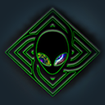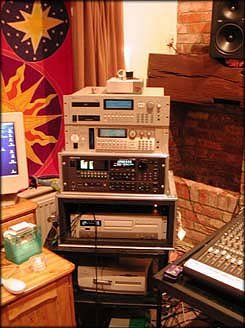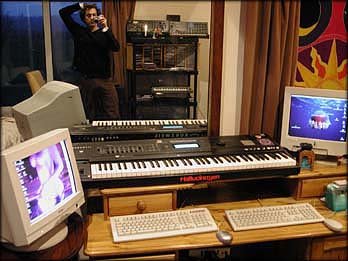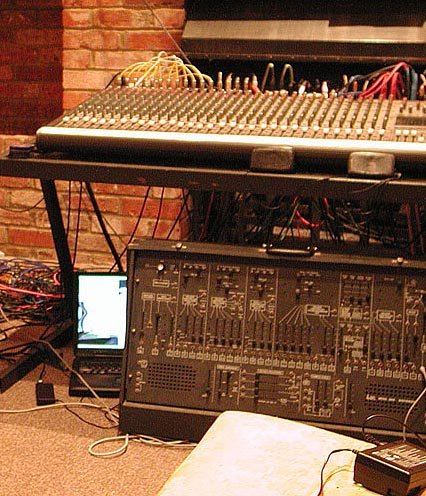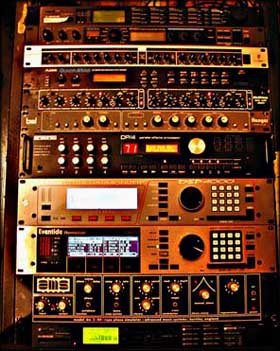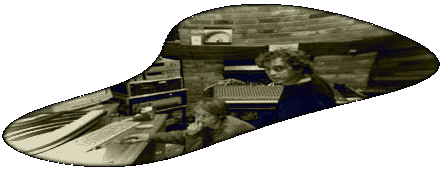Leaderboard
Popular Content
Showing content with the highest reputation on 08/04/21 in all areas
-
great post i read all of it, very interesting. the ARP could be a source for his basslines definitely, as it has that raw organic flavor to it. and the Eventide DSP4000 and the Eventide Harmonizer H3000 is definitely what made his tracks sound so damn good (on top of his skills ofc) aswell as that TC electronic Finalizer. Which Im not sure exactly what it does tbh, except making it sound even better. Maybe something like a Crystalizer/Vitalizer with compression/limiting? Anyway this is hugely interesting and I love diving into the technicals of these legends, to perhaps gain some inside knowledge. Keep hunting1 point
-
yep it was badboll i suppose that kick circulated around that place ^^ me and a friend made some tunes in reason back then, using this kick, good times.1 point
-
What I’m trying out right now in order to somewhat replicate the Hallucinogen bass, is TAL-101, and Arturia’s emulation of the Juno-106 + Korg’s MS-20 plugin. It would be awesome if Arturia did a SH-101 emulation as well, which captured every nuance of it. I’m also trying out the Arturia ARP 2600 V plugin, since Simon used the ARP 2600 for something in his tracks. Maybe for bass? I managed to find this from the old Sphongle/Hallucinogen website from 2004 om wayback machine, which is really great since it contains the complete gear list used for his older albums, quite cool that both Hallucinogen and Infected Mushroom used the Behringer Intelligate for their Trancegate effect. Infected Mushroom even had a track named Intelligate. I see now that Hallucinogen preferred the Drawmer one: ” The Behringer Intelligate i would love to use more, but the inputs distort, no matter how i match them. Below that is the Alesis Quadraverb... The first FX unit i bought, and the one thing that i have absolutely definitely used on everything i have ever done. Iit is usually jammed on the ping-pong delay setting, occasionally with a phaser thrown in too. Next is the Drawmer Gate. This particular one used to belong to butterfly studios, and when they closed down, selling off all the gear, this was one of the few things that hadn't had coffee spilt down it! This is what i use for that 'chopped up stuttering effect', usually on vocals. A couple of the knobs are a bit crusty...maybe it's days are numbered...” "Perhaps you would like to know some of Simon Posford's secrets ? Simon himself gives you some very interesting anectodes about the gear he used on some tracks and the gear he likes to use. At the end of this section, I've made a glossary for those who don't know much about instrument terms. As I know a bit about musical and gear 'life', I'll try to make in the future a little history about the intruments in Simon's studio. You could see for yourself that Simon has some great and rare vintage gear.... You want to know more about the gear and how Simon uses it? So read carefully some of Simon's secrets For those who don't know well the technical terms, i made a glossary to help you. Perhaps a little gear history will follow... Most of the first Shpongle album was done with the gear you see on this photo. Simon used only the Kurzweil K2500, the Apple Mac G3, AKAI S3200 sampler and Roland SH101 to do the work with Raja. They recorded the flutes usually at dawn. On 'behind closed eyelids' they set the microphone up in the garden, at a distance, so it would pick up the birds singing too, and while Raja Ram was playing, two pheasants came and stood at his feet, blinking vacantly at him. On the track 'D.M.T.' they used the software called Vocal Writer for Mac. At the top of the stack is the Akai CD3000 sampler, which Simon borrowed from Raja Ram. It was drafted in for the new Shpongle album 'Tales of the Inexpressible', to cope with all the recycle files. The S3200 which has only 16Mb of RAM is below that and it was the one used in the first Shpongle album. The black machine below that is an Akai DR16 hard disk recorder. Since the sampler doesn't have much memory, Simon records a lot of stuff to the DR16. Oh yeah, another great view of the lab. So, let's go... You can see under the Mackie the ARP 2600 analog synthetizer. Simon love the Spring reverb of this gear and if you use it in stereo, it is completely out of phase. Simon used the ARP for the bass on 'Shamanix' and some of the riffs of 'Solstice'. He finds the envelopes of the ARP a bit too slow for the style of music he makes, so he often uses just parts of it, in combo with the MS20. Sometimes he uses the oscillators or sometimes the filter. The ARP is a patchable synth, so you can plug the modules as you want or with differents modules of other patchablesynth like the MS20... He likes the Ring Mod of the ARP a lot, too. The Korg MS20 and MS50 synth are on the right-corner of the photo. He likes to use them together too...apparently "I love the filters... you get a lowpass and a highpass... and they are both killer, in a cheap n squidgy kind of way!" Under the stack of CDs you find a Roland SH101, another analog synth. It gets used on just about every track he has ever done. Maybe not so much recently, but only because his MIDI-CV Gate converter is broken. Other broken gear is the Oscar, a rare and wonderful synth. He did the main distorted riff with it in the track 'Alpha Centauri'. Simon has a prophet 5 which is another synth waiting to get repaired.... On the right of the Mackie there is the FX rack, the things that process the sound of Simon Posford Here is Simon himself, explaining the use of them : "Starting from the top, the black out of focus unit is a TC M2000, which i never use because the knob is broken, so i can't change any parameters. A shame, because the reverbs are lovely. Below that is some Zoom rubbish which i don't use. I wish i had that little half rack thing they make. The Behringer Intelligate i would love to use more, but the inputs distort, no matter how i match them. Below that is the Alesis Quadraverb... The first FX unit i bought, and the one thing that i have absolutely definitely used on everything i have ever done. Iit is usually jammed on the ping-pong delay setting, occasionally with a phaser thrown in too. Next is the Drawmer Gate. This particular one used to belong to butterfly studios, and when they closed down, selling off all the gear, this was one of the few things that hadn't had coffee spilt down it! This is what i use for that 'chopped up stuttering effect', usually on vocals. A couple of the knobs are a bit crusty...maybe it's days are numbered... The Bel Flanger was another refugee from butterfly, but unfortunately this time the coffe stains were included. I don't use it much unless i need a flanger with a CV input. The Ensoniq DP4 was my second FX unit, and is also a great piece of gear... unfortunately the Flangers and Phasers are too distinctive, so i only use it for amp/distorted filter sounds, and short reverbs, on a kik drum, say.... i quite like the compressors, too. The Eventide DSP4000 was given to me by Simon Holtom, when we started Twisted Records, in order to get the 'Lone Deranger' underway... i told him if he bought me an eventide, i would be his slave... it was pretty expensive, considering it is just an FX unit, and when you realise what you can achieve with plug-ins alone, but What a Gift!!! Stunning Reverbs...warm choruses and all kinds of buckety pitch effects, the question is what sound to choose.. The Orville, below that, is basically 2 DSP4000s in a box. Again far too expensive to purchase single-handedly, but when offered to me as an advance, i just couldn't refuse!! Next is the AMS Phaser, another Bargain from the Butterfly Basement... a distinctive sound, but a lovely one. Finally the 'Finaliser', from TC electronic i use on pretty much everything. When i record an instrument i compress it with that.... when i put anything in the computer i compress it, and my whole final mix gets put through it too. Although i always 'mix into it', i never finalise an already finished mix. I just wish i had the 24-bit version." That's it for the FX rack. You think Simon play a CD, a DAT or somethink like that during a live ? Enough of bullshit, here is Simon speaking about how his live are, the gear setup and how he uses them. "Although I can't speak for other artists, I prefer to take my DR16 hard disk recorder, (well actually I prefer the organiser to hire one, so I don't have to dismantle my studio every time, and get a hernia lugging the sodding thing to the airplane, where i get charged for overweight baggage... only to have my precious studio equipment bashed around by baggage handlers!) But the reality is that I often end up taking my own unit, as no-one can ever seem to find one... Then I wonder why it goes wrong 3 months later! In fact one time, Akai refused to fix it, as it was "full of beer and tobacco...and a 5 pence coin" (and of course the sweat of 2000 ravers!). Then with the DR16, I have 16 tracks of audio to mix live... so my gigs are more about 'live engineering/mixing' than 'live playing'. Since it is just me on stage, i don't really get time to play anything... although the mixing desk I like to use as an instrument in its own right... I like this way of working, 'cos if the Kik drum is too quiet, i just turn it up... or add more bass or whatever, so i have full control of the sound. Of course this is an absolute nightmare if the monitoring is bad. For example at Return to the Source in Brixton Academy, they gave me one mono monitor that sounded like a transistor radio... You can imagine what it is like trying to blend all the sounds involved in a tune, along with all their FX when you can't hear a thing!!! But this way of working also allows me to arrange a track live... With 16 tracks I can have complete control over the kik, bass, hats, perc, a load of riffs... Whatever I can fill up the 16 tracks with. Normally I have everything looping on all the tracks, and sometimes one track will contain diffrent riffs, depending where you are in the song... But still sometimes 16 tracks is not quite enough, so i will sync my laptop with midi timecode or midi clock, and use rebirth or something to generate a few more riffs that I can tweak live... But there is so much tweaking to do already, just to mix/engineer the track, that I don't have so much time to tweak the external synths... Another problem is that I have to load a new project from the Akai quite often, which takes a few seconds... when the machine is under studio conditions... so sometimes I will play a track off DAT while I reload the Akai, change the delay times, set up rebirth etc for the next few tracks... It is not ideal, but when there is just one of you on stage, it is much much harder to do a complete live set. Anyway, this should give you an idea of what i get upto during a live set..." I tried to explain as simply as possible some technical terms of the vocabulary used for the synthesizer. If you want more technical details ask me, but I won't answer you individually by email. You can also send me words that you would like me to explain. Analog synth : Analog synth use analog voltage signal in this circuit to generate a sound. Some analog synth electronic circuit are instable and so, the sound may be a bit different each time. Hear an analog synth is something that all synth lover sould make CV gate : CV, for 'Control Voltage', was used by old analog synths to communicate between each other. It's an analog signal and only the notes and the velocity were transfered. Actually there is CV gate/MIDI converter to transform the CV signal to a MIDI system. Very usefull for those who want to use their old analog synth with a computer for example. Envelop : Envelop is using to control amplitude of the sound. In an analog synth it's called ADSR (Attack, Decay, Sustain and Release). It can be use with a filter too. Filter : Another important thing for a syntheziser... As the name explain, a filter is something to let you filtering low or high frequencies, it's depend of which kind of filter you use. There are Low-pass filter (must current), High-pass filter (most current in Psy-trance music too), Band-pass filter and some other. M.I.D.I. : With M.I.D.I. (for Musical Instrument Digital Interface) you can communicate and transfert numeric data between instruments, computer or sequenceur. Certainly the most important thing in the musical industry. Oscillator (also called Generator) : This is an electronic circuit who generates a wave forms. Without that a synth couldn't make a sound. Most basic wave forms are square, saw, sin or triangle. A syntheziser can have more than one oscillator. Patchable syntheziser : In the first time of the analog area, each module of a synth could be connected as we wanted. For example, you could connect a filter of a synth to an oscillator of another synth... Nowadays, most of the synth are built-in in a way that you can't connect the different parts of the sound generator as you want. Ring Mod : It's something which can generate complex sound with two waveforms, by combining the sum and the difference of the frequency of the waves. Some synthezisers don't have this." "Many of you are dreaming about it, and finally here it is, the complete equipment list of the Hallucinogen soundlab. For those who know a bit about musical instruments, you're going to go mad just by looking at the vintage gear and the most important thing which made the 'incredible twisted sound' of Simon, the effects unit. So, here are the photos of the Hallucinogen lab. By the way, the studio is currently near Stonehenge in the English countryside. It's certainly a great place for Simon to be inspired The workspace of the lab The keyboard is a Kurzweil K2500 and Simon uses it as the master keyboard. At the left of the photo you can see a PC which is connected to a Gina soundcard (under the table), and on the right it's a Mac running with a Korg12/12 soundcard. Both computers are Midi Timecode synced together. Simon uses Logic Audio Platinium as a sequencer/editor. In the background you can see Simon himself and some very great analog synths like Korg MS20, MS50 and Roland SH101. For more details go to the -Technical- section... The Sampler 'space center' On top-left corner you can see the Mackie speaker. On the rack unit you find the two sampler gear, an Akai CD3000 and a S3200. The black "box" in the middle of the photo is an Akai DR16, which is a 16 track HD digital recorder. Simon certainly uses it for the mastering of a track and/or during his live performance. I hope he'll give me some insight on this... Below is the DAT & CD-R machine, Fostex D-5 and Simon doesn't like it very much because it doesn't have S/PDIF out. Most of this materiel is used by Simon during live performances. On the right-hand side, you see a piece of the Mackie 32*8 analog desk For those who are lost in the technical terms, you will be able to find a complete glossary in the -Technical- section. The FX unit First pic is a better view of the Mackie... The computer below is a Mac, certainly used in Simon's live. Under the desk is a ARP 2600 without keyboard. Next the console, it's the fx rack, one of the most important things in a studio... You'll find the complete list of the Fx unit in the -Technical- section. For a complete list of the gear, more technical things and even more details about how Simon uses them, have a look at the -Technical- section of the -SoundLabs- menu. For those you wanted the complete Hallucinogen's equiment list, here it is. You can also find some good Simon's anectodes about the gear at the -Technical- section. The brain unit : Mac G3 266Mhz PC Pentium 800Mhz Korg 12/12 soundcard Gina soundcard Logic Audio Platinum Mackie 32*8 bus mixing desk Mackie HR824 monitor The keyboards unit : Kurzweil K2000 Korg MS20 Korg MS50 Roland SH101 Roland Juno106 ARP 2600 Oscar Prophet 5 The digital unit : Akai S3200 Akai CD3000 Akai DR16 Fostex D-5 Tascam mx2424 The effects unit : TC M2000 Zoom Behringer intelligate Alesis Quadraverb Drawmer Gate Bel Flanger Ensoniq DP/4 Eventide DSP4000 Eventide Harmonizer AMS dm 2-80 TC Electronic Smalltone Phase"1 point
-
Ah interesting. So in theory that leaves it open for this magnificent album, to be released on more platforms in the future? Perhaps remastered like: Cosmic Treasure Vol-1. Oh and the other album as well, Asynja! Imagine Groom Lake remastered…1 point


